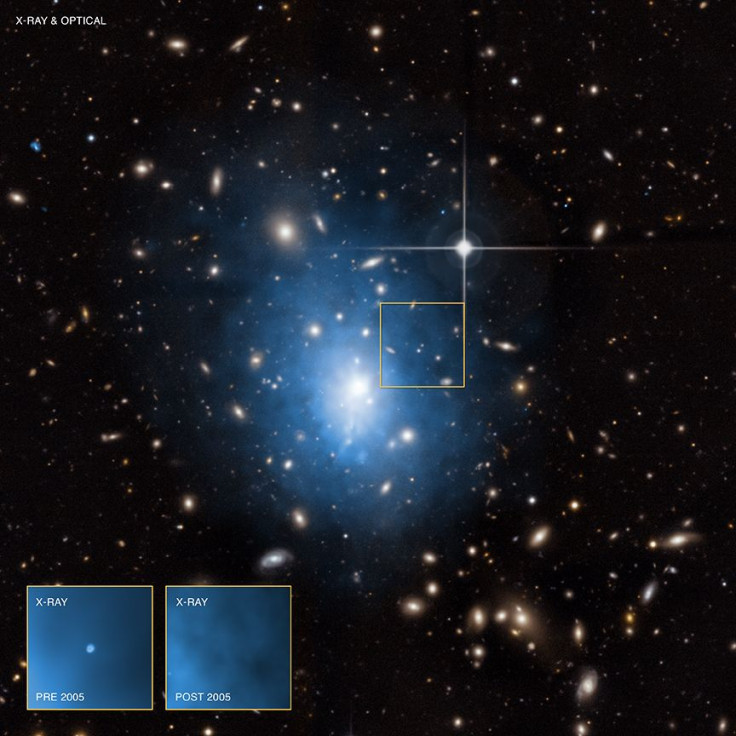A Star Gets Torn Apart: First Ever Recorded ‘Death By Black Hole’ In A Dwarf Galaxy
Astronomers using NASA’s Chandra X-ray Observatory observed what they describe as the death of a star at the hands of black hole. A flare seen in a dwarf galaxy 800 million light-years from Earth, inside the Abell 1795 galaxy cluster, in 1999 was not seen again after 2005 which leads astronomers to conclude the X-ray source was a black hole destroying a star.

Researchers believe the star happened to be too close to a black hole and in the process of being devoured, bits of stellar debris would fall towards the black hole at an incredible rate of speed, heating up and emitting a burst of X-ray radiation. This radiation, indicating temperatures up to millions of degrees in Fahrenheit, were then observed by Chandra. Peter Maksym, from the University of Alabama in Tuscaloosa, led a study on the Chandra observations and said in a statement, “We can't see the star being torn apart by the black hole, but we can track what happens to the star's remains, and compare it with other, similar events. This one fits the profile of 'death by a black hole.” Maksym’s research was published in the Monthly Notices of the Royal Astronomical Society.
The researchers analyzed years of Chandra observations of Abell 1795 to discover the flare. Additional observations from the European Space Agency’s XMM-Newton satellite, in 2000, and NASA’s Extreme Ultraviolet Explorer space telescope, in 1998, also picked up the event.
Compared to the Milky Way, the dwarf galaxy is much smaller, containing just 700 million stars compared to the 200 to 400 billion stars of the Milky Way. The black hole at the center of the dwarf galaxy is much smaller than Sagittarius A*, Sgr A*, the supermassive black hole at the center of the Milky Way.
The black hole at the center of the dwarf galaxy is being defined as an “Intermediate mass black hole,” an elusive type of black hole rarely seen in the universe. The black hole at the center of the dwarf galaxy is 10 times less massive than Sgr A*. Davide Donato, from NASA’s Goddard Space Flight Center, led the other study based on the Chandra observations and said in a statement, “We have lots of evidence for small black holes and very big ones, but these medium-sized ones have been tough to pin down.” Donato’s research was published in the Astrophysical Journal.
© Copyright IBTimes 2024. All rights reserved.






















